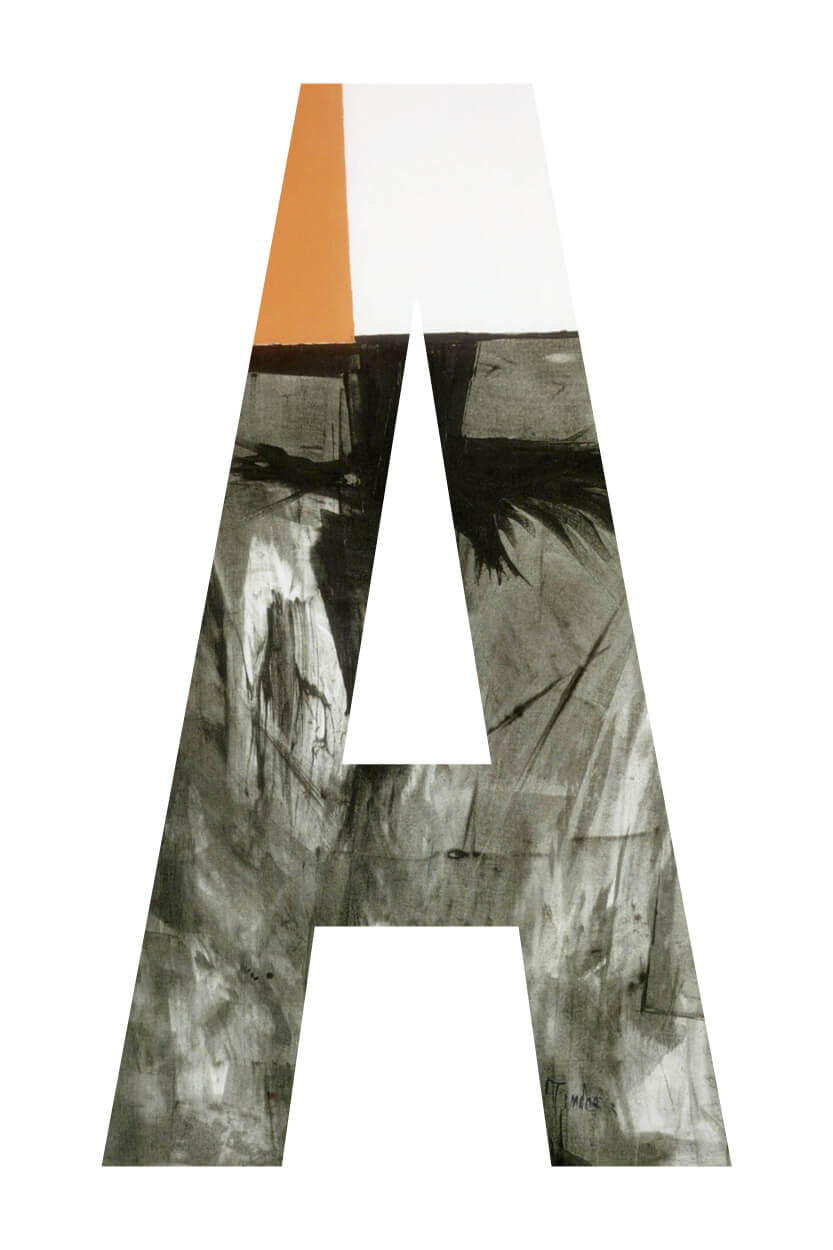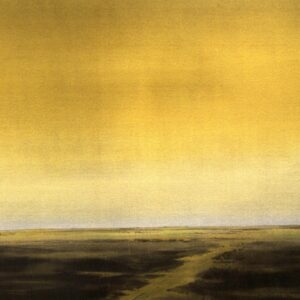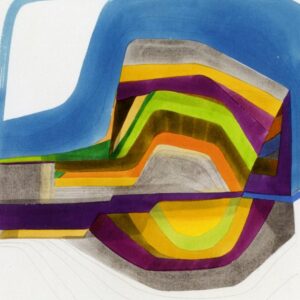The Dark Land 2/80 1980

Takao Tanabe, The Dark Land 2/80, 1980
Acrylic on canvas, 115 x 546 cm
Max Bell Building, Banff Centre for Arts and Creativity
Beginning in the 1970s, Tanabe painted an exceptional series of canvases of the prairie landscape during different seasons, like in Summer Foothills 8/79, 1979, and during different times of day. The Dark Land 2/80 is perhaps the most majestic of these works. He has succeeded in making a seemingly bleak landscape—bereft of human activity—visually exciting through his use of colour and the remarkable skill used to apply the transparent washes of pigment. The sky, like that above the land itself, is alive with movement and energy, and the terrain below is subtly and richly modulated. The image is pared down and minimal but has an astonishing impact and marks Tanabe as a landscapist of the first order, but also as an artist who works on his own terms.
Many of Tanabe’s paintings of the prairies, such as The Land 22/77, 1977, were large in size, but with The Dark Land 2/80, Tanabe dramatically increased the scale of his pictorial ambition. Tanabe produced The Dark Land 2/80, his first landscape triptych, after leaving Banff for Vancouver Island. Although he was physically removed from his prairie subject matter, his works became grander, extending his vision outward. Following The Dark Land 2/80, Tanabe produced Southern Alberta Foothills, 1982, his largest painting to date.

Although many Canadian artists, such as Tanabe’s contemporary Dorothy Knowles (1927–2023), have taken the prairie landscape as a subject matter, no one has consistently painted it on such an epic scale as Tanabe. As Nancy Tousley writes, these are works that require an enormous amount of preparation and, in their execution, the exceptional degree of control that the artist refined during his stay in Japan. Tousley saw in these works a confluence of influences from Asian art, Abstract Expressionism, and realism, and declared, “never has a series of simple prairie landscape images seemed so nuanced and complex, or so unlike any others.”

 About the Author
About the Author
 More Online Art Books
More Online Art Books
 Acknowledgements
Acknowledgements